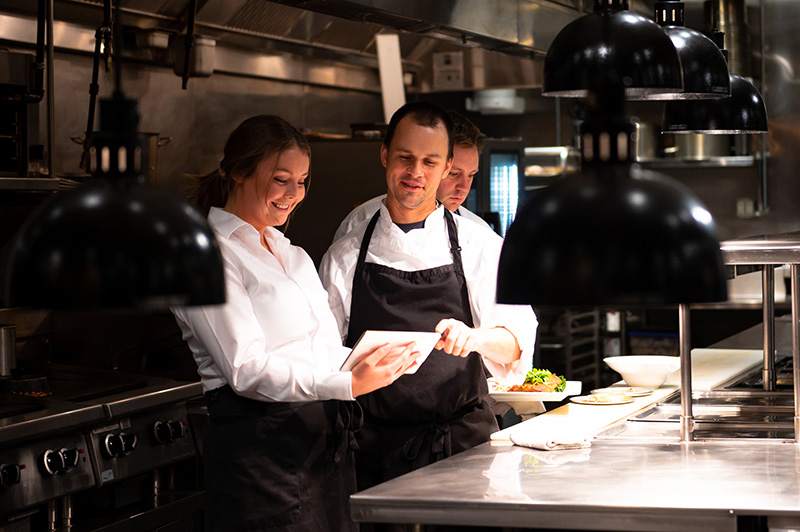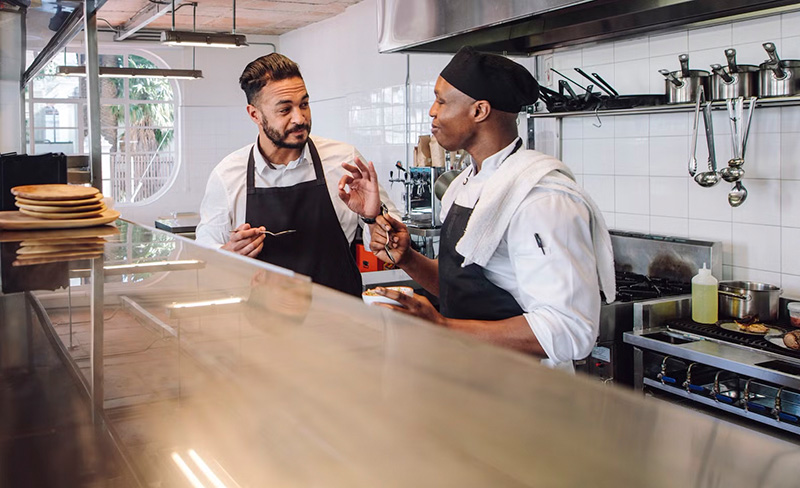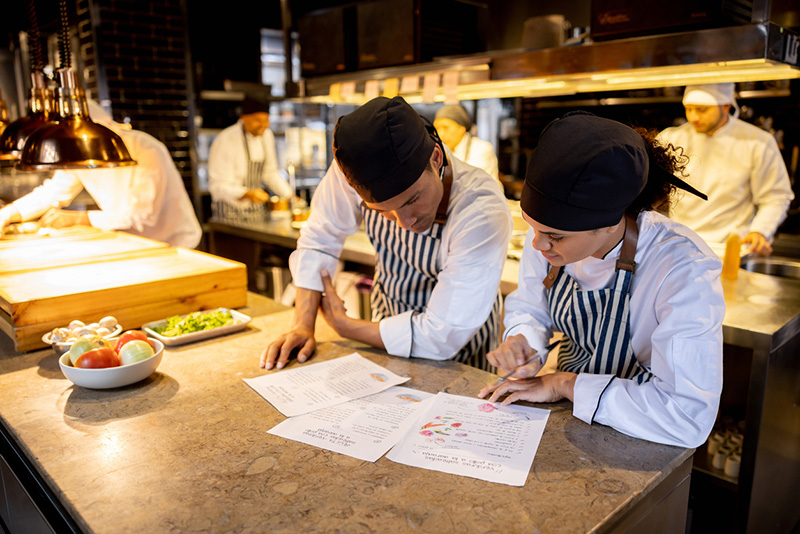How to build a strong food safety culture
In hospitality, having a strong culture around food safety is vital as it helps you to:
- prevent foodborne illness, and
- maintain a positive reputation amongst patrons.
But how do you build this culture? It’s not a quick fix and requires effort from everyone in the business. But once you achieve a strong culture and establish standards for employee performance management, we guarantee you’ll reap the rewards.
1. Have the commitment of your leaders
Good leadership is pivotal for fostering a strong food safety culture. If managers make a wholehearted effort to uphold high food safety standards, it sets the tone and emphasizes the importance of safety throughout the organization. When you lead by example, those around you are bound to follow.

2. Train your staff
By empowering your team with workplace training, you’re giving them—and yourself—the best opportunity to succeed.
Workplace training topics
The importance of handwashing
Proper handwashing techniques are essential for preventing the spread of harmful bacteria. Staff should be trained on when and how to wash their hands effectively. We recommend having posters hanging around your venue that visualise correct handwashing methods.
Temperature control
Your team members, no matter their role, should understand the importance of temperature control concerning food safety and how it can impact the wider business. One mistake, like an undercooked dish being served to a customer, can affect everyone, significantly dampening your business and workplace culture.
You must train your staff to look out for temperature irregularities and know what should be done to fix these issues. Your training should cover appropriate temperature monitoring, refrigeration, and hot-holding procedures.
Our article, “Improve your kitchen temperature monitoring systems”, can enlighten you about the ways modern solutions, like wireless temperature monitoring, can improve kitchen climate control.
Cleaning and sanitizing
Staff should be trained on how to clean and sanitize equipment, surfaces, and utensils effectively.
Wondering how this relates to culture? When everyone takes part in upholding a clean and safe environment, it creates a shared sense of responsibility and pride. This can positively impact morale, influencing the overall workplace culture.
If you would like more guidance on this topic, our article, “A guide to monitoring food safety, hygiene and sanitation,” is a great tool for you.
Remember to do refresher courses
We’re all human; we forget things. That doesn’t mean we can’t learn them again. Regular refresher courses are essential to reinforce food safety principles and help staff members stay up to date with best practices. Plus, they can be a place where staff can address concerns with management or where processes can be evaluated for improvement.

3. Make sure you communicate
When there’s a healthy, open dialogue between management and staff, concerns can be addressed directly and comfortably. Encouraging your staff to report incidents as they occur can help identify problems early, allowing for quick fixes.
Showcasing this openness to feedback boosts your staff’s morale, which has a trickle-down effect on enhancing workplace culture, especially when it comes to food safety. When your team knows you’ll listen to their feedback, they’re bound to be more willing to speak up.
The same goes for communication with your patrons. Clearly display what allergens are present in a venue and tell your staff to discuss these hazards with visitors. Also, display health certifications and guidelines throughout your venue. This transparency can boost your reputation as a reliable eatery.

4. Always look to improve
It’s said that success is the sum of small efforts repeated day in and day out. Try to always review, evaluate, and improve your operations.
Adapting to changes
The food service industry is constantly evolving, with new regulations, technologies, and best practices emerging. Using a reliable food safety app can help you stay ahead by simplifying the process of reviewing and updating your checklists. Regularly reviewing and updating food safety checklists ensures that your venue stays current and compliant with industry standards.
Addressing weaknesses
Regular reviews allow you to identify any weaknesses or gaps in your current procedures and take corrective action to address them. This proactive approach helps prevent issues before they arise and minimizes the risk of foodborne illness or contamination.
Promoting efficiency
Updating procedures can also help streamline operations and improve efficiency. By identifying opportunities for improvement and implementing changes, you can optimize your food safety management system and ensure that resources are used effectively. For example, you can use a health and safety tool and a food compliance software.
How to update your procedures
- HACCP plans: Hazard Analysis and Critical Control Points (HACCP) plans should be reviewed frequently to ensure they accurately reflect the specific hazards present in your operations. Updates to the plan may be necessary if new processes or ingredients are introduced or changes occur in your facility layout.
- Install new equipment: New equipment or technology may offer improved features or capabilities. Assess your equipment needs and consider upgrading or replacing outdated equipment to enhance operations.
- Revise your training materials: These should reflect changes in regulations or procedures. This ensures that staff members receive the most up-to-date information and are equipped to handle food safely.
Operandio helps you build your culture
We’ve covered a lot in this article, so if you’re unsure where to go from here, we can help. Operandio can provide you with digital-based solutions to food safety challenges. From food safety checklist templates and tools to record employee performance management to intuitive staff training, our service can help you achieve an enviable culture for food safety. Book your free demo today.


